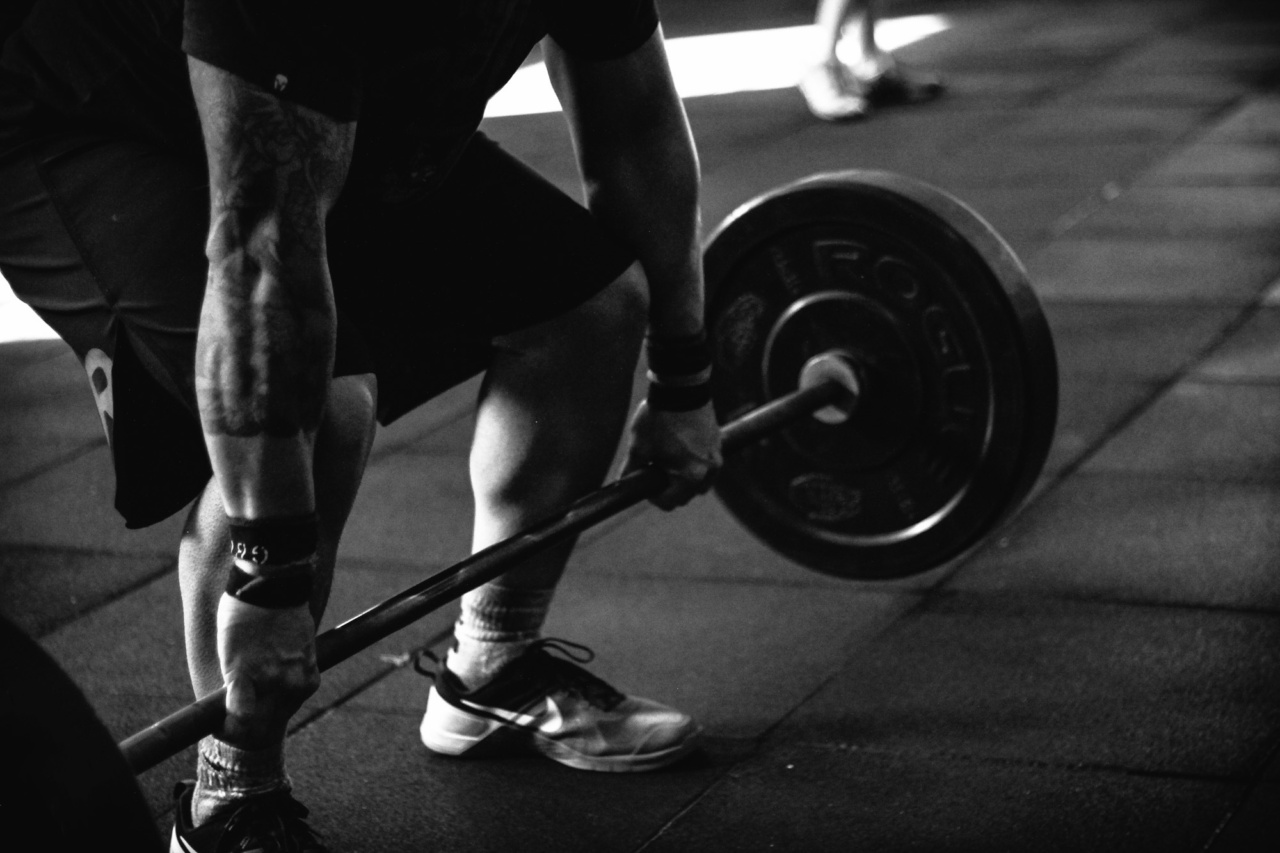Glaucoma is a chronic eye condition that affects the optic nerve and can potentially lead to irreversible blindness if left untreated.
It is important for glaucoma patients to take certain precautions in their daily lives to manage the condition and prevent further damage to their eyes. One activity that individuals diagnosed with glaucoma should be particularly cautious about is heavy weightlifting.
While exercise is generally beneficial for overall health, heavy weightlifting can pose specific risks to the eyes and optic nerves for people living with glaucoma.
The Increased Intraocular Pressure
One of the primary concerns for glaucoma patients when it comes to heavy weightlifting is the potential increase in intraocular pressure (IOP).
Intraocular pressure refers to the fluid pressure within the eye, and it plays a crucial role in maintaining the shape and integrity of the eye. In individuals with glaucoma, the optic nerve is already susceptible to damage due to increased pressure, and raising intraocular pressure further through weightlifting can exacerbate this risk.
During weightlifting, there is a significant rise in blood pressure throughout the body as the muscles exert force.
This increase in blood pressure can also lead to elevated intraocular pressure, which might be particularly dangerous for glaucoma patients. Therefore, heavy weightlifting should be approached with caution, and alternative forms of exercise that do not pose a risk of dramatically increasing intraocular pressure should be considered instead.
Risks of Retinal Detachment
In addition to the concerns regarding intraocular pressure, heavy weightlifting can also increase the likelihood of retinal detachment.
Retinal detachment is a serious eye condition where the retina, a crucial part of the eye responsible for visual perception, becomes separated from the underlying tissues. This separation can result in vision loss or even permanent blindness.
Engaging in heavy weightlifting can lead to sudden increases in blood pressure and intraocular pressure, which may cause stress on the retina and increase the risk of detachment.
While retinal detachment is a risk for anyone participating in intense physical activities, individuals with glaucoma should be particularly cautious due to their already compromised ocular health.
Effects on the Optic Nerve
The optic nerve, responsible for transmitting visual information from the eyes to the brain, is highly sensitive to changes in blood flow and pressure.
Heavy weightlifting can result in a significant redirection of blood flow towards the muscles, diverting it away from vital organs such as the eyes and optic nerves. This reduced blood flow to the optic nerve can compromise its function and potentially worsen the existing damage caused by glaucoma.
Moreover, weightlifting-induced spikes in blood pressure can place additional stress on the optic nerve, increasing the risk of optic nerve damage and vision loss in glaucoma patients.
It is crucial for individuals with glaucoma to prioritize maintaining a stable blood flow to the optic nerve, making heavy weightlifting an activity that should be avoided or modified to minimize potential harm.
Substitute Exercises for Glaucoma Patients
While heavy weightlifting may present risks for glaucoma patients, it is important to understand that exercise, in general, can still be beneficial for managing the condition and improving overall health.
Glaucoma patients should explore alternative forms of exercise that do not pose specific risks to their eyes.
Low-impact aerobic exercises such as walking, swimming, or cycling can provide cardiovascular benefits without significantly increasing intraocular pressure or strain on the optic nerve.
These exercises promote blood flow throughout the body, including the eyes, while minimizing the risk of sudden pressure increases. Additionally, activities like yoga and tai chi can help improve balance and flexibility, which are important aspects of maintaining good eye health.
It is essential for glaucoma patients to work closely with their healthcare professionals to develop a personalized exercise plan that suits their specific needs and limitations.
By choosing exercise routines that are safe and beneficial, individuals with glaucoma can enhance their overall well-being without compromising their ocular health.
Other Considerations
While heavy weightlifting is a type of physical activity that glaucoma patients should avoid, there are other factors to consider for maintaining optimal eye health.
It is crucial to undergo regular eye examinations to monitor the progression of glaucoma and ensure that the prescribed treatments, such as eye drops or surgical interventions, are effective. Compliance with medication schedules and following eye care guidelines provided by healthcare professionals are vital in managing glaucoma and preventing further vision loss.
In addition to exercise, a balanced diet rich in nutrients, especially antioxidants like vitamins C and E, zinc, and omega-3 fatty acids, can be beneficial for ocular health.
Glaucoma patients should also avoid smoking and excessive alcohol consumption, as these habits can further compromise their eye health.
Conclusion
While exercise plays an important role in maintaining overall health, glaucoma patients must approach physical activities, especially heavy weightlifting, with caution.
The risk of increased intraocular pressure, the potential for retinal detachment, and the strain on the optic nerve make heavy weightlifting a potentially harmful activity for individuals living with glaucoma. It is crucial for glaucoma patients to consult their healthcare professionals and develop a personalized exercise plan that minimizes the risk of further damage to their eyes.
By choosing alternative exercises and adopting a holistic approach to eye care, glaucoma patients can better manage their condition and preserve their visual health for the future.





























